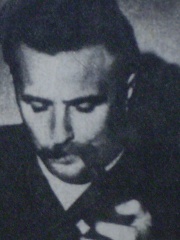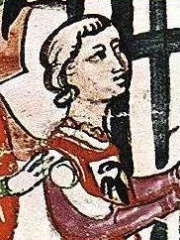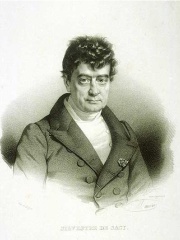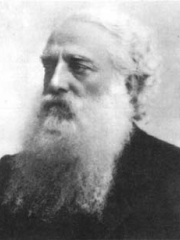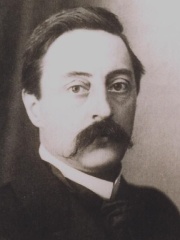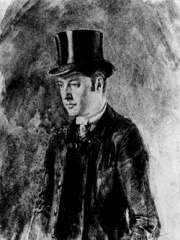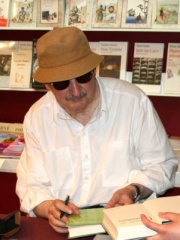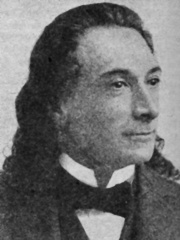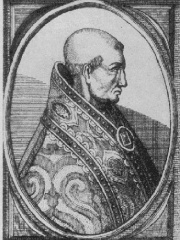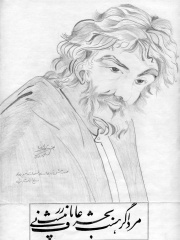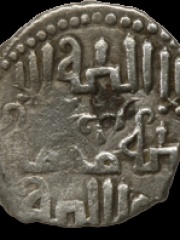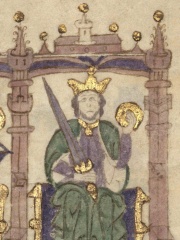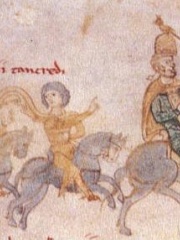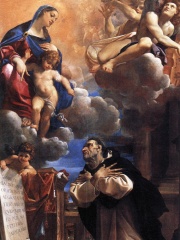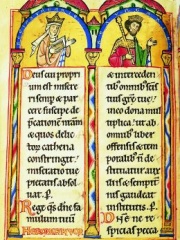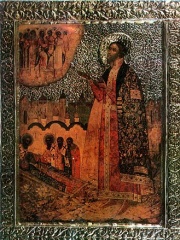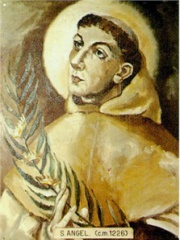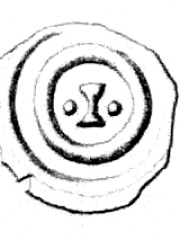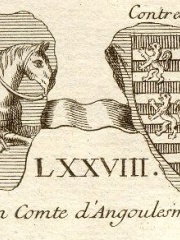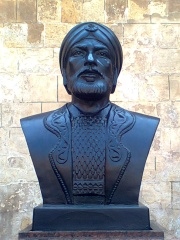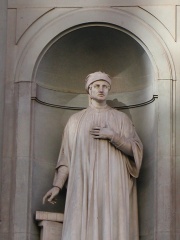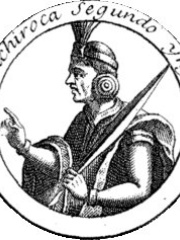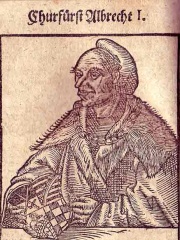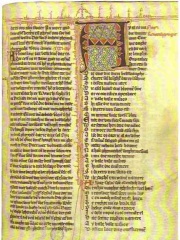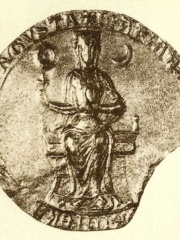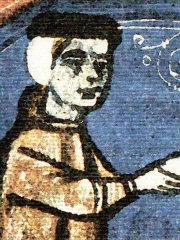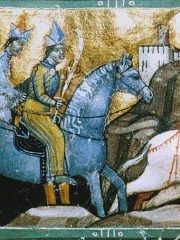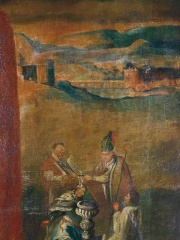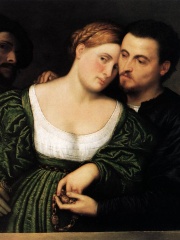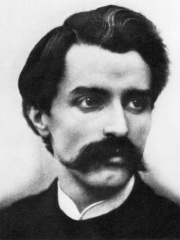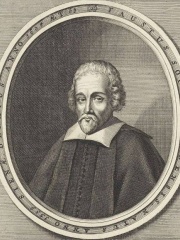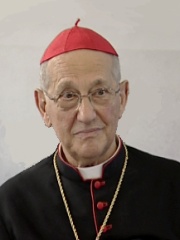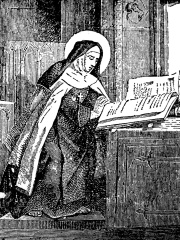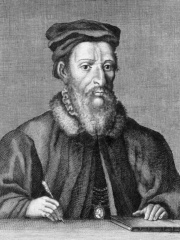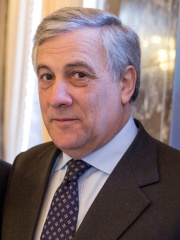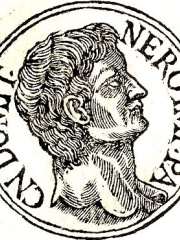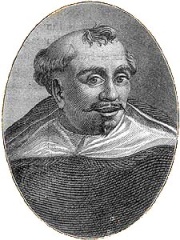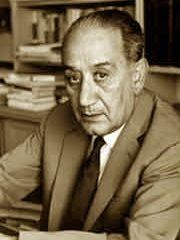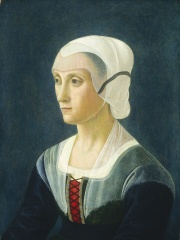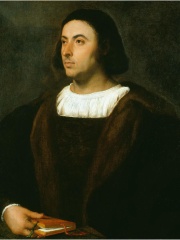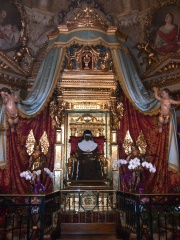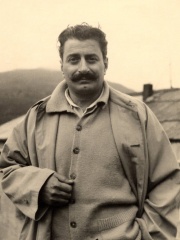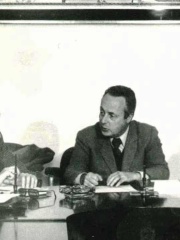WRITER
Thomas of Celano
1185 - 1260
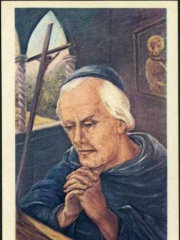
 Thomas of Celano
Thomas of Celano
Thomas of Celano (Italian: Tommaso da Celano; c. 1185 – c. Read more on Wikipedia
Since 2007, the English Wikipedia page of Thomas of Celano has received more than 81,080 page views. His biography is available in 24 different languages on Wikipedia. Thomas of Celano is the 1,447th most popular writer (down from 1,242nd in 2019), the 1,570th most popular biography from Italy (down from 1,369th in 2019) and the 106th most popular Italian Writer.
Memorability Metrics
81k
Page Views (PV)
58.81
Historical Popularity Index (HPI)
24
Languages Editions (L)
5.62
Effective Languages (L*)
2.32
Coefficient of Variation (CV)
Notable Works
Page views of Thomas of Celanos by language
Over the past year Thomas of Celano has had the most page views in the Italian wikipedia edition with 17,775 views, followed by English (10,400), and Spanish (4,469). In terms of yearly growth of page views the top 3 wikpedia editions are Esperanto (72.57%), Occitan (46.72%), and Czech (46.12%)
Among WRITERS
Among writers, Thomas of Celano ranks 1,447 out of 7,302. Before him are Hieronymus of Cardia, Virginia Henderson, Régis Debray, Li Qingzhao, Enzo of Sardinia, and Antoine Isaac Silvestre de Sacy. After him are Henry Steel Olcott, Arnold van Gennep, Nikephoros Bryennios the Younger, Jules Laforgue, Sławomir Mrożek, and Naftali Herz Imber.
Most Popular Writers in Wikipedia
Go to all RankingsHieronymus of Cardia
390 BC - 250 BC
HPI: 58.85
Rank: 1,441
Virginia Henderson
1897 - 1996
HPI: 58.84
Rank: 1,442
Régis Debray
1940 - Present
HPI: 58.84
Rank: 1,443
Li Qingzhao
1084 - 1155
HPI: 58.83
Rank: 1,444
Enzo of Sardinia
1220 - 1272
HPI: 58.83
Rank: 1,445
Antoine Isaac Silvestre de Sacy
1758 - 1838
HPI: 58.82
Rank: 1,446
Thomas of Celano
1185 - 1260
HPI: 58.81
Rank: 1,447
Henry Steel Olcott
1832 - 1907
HPI: 58.80
Rank: 1,448
Arnold van Gennep
1873 - 1957
HPI: 58.80
Rank: 1,449
Nikephoros Bryennios the Younger
1062 - 1137
HPI: 58.80
Rank: 1,450
Jules Laforgue
1860 - 1887
HPI: 58.79
Rank: 1,451
Sławomir Mrożek
1930 - 2013
HPI: 58.79
Rank: 1,452
Naftali Herz Imber
1856 - 1909
HPI: 58.78
Rank: 1,453
Contemporaries
Among people born in 1185, Thomas of Celano ranks 8. Before him are Pope Urban IV, Shams Tabrizi, Töregene Khatun, Afonso II of Portugal, William III of Sicily, and Hyacinth of Poland. After him are Gertrude of Merania, Michael of Chernigov, Angelus of Jerusalem, Raymond Roger Trencavel, Inge II of Norway, and Hugh X of Lusignan. Among people deceased in 1260, Thomas of Celano ranks 4. Before him are Qutuz, Kitbuqa, and Accursius. After him are Sinchi Roca, Albert I, Duke of Saxony, Hadewijch, Maria of Brabant, Holy Roman Empress, Giacomo da Lentini, Kadan, Morta, and Constance of Toulouse.
Others Born in 1185
Go to all RankingsPope Urban IV
RELIGIOUS FIGURE
1185 - 1264
HPI: 73.22
Rank: 2
Shams Tabrizi
WRITER
1185 - 1248
HPI: 71.84
Rank: 3
Töregene Khatun
POLITICIAN
1185 - 1246
HPI: 68.10
Rank: 4
Afonso II of Portugal
POLITICIAN
1185 - 1223
HPI: 65.44
Rank: 5
William III of Sicily
POLITICIAN
1185 - 1198
HPI: 61.70
Rank: 6
Hyacinth of Poland
RELIGIOUS FIGURE
1185 - 1257
HPI: 59.46
Rank: 7
Thomas of Celano
WRITER
1185 - 1260
HPI: 58.81
Rank: 8
Gertrude of Merania
COMPANION
1185 - 1213
HPI: 58.78
Rank: 9
Michael of Chernigov
POLITICIAN
1185 - 1246
HPI: 58.78
Rank: 10
Angelus of Jerusalem
RELIGIOUS FIGURE
1185 - 1225
HPI: 57.98
Rank: 11
Raymond Roger Trencavel
POLITICIAN
1185 - 1209
HPI: 54.54
Rank: 12
Inge II of Norway
POLITICIAN
1185 - 1217
HPI: 54.16
Rank: 13
Hugh X of Lusignan
POLITICIAN
1185 - 1249
HPI: 53.99
Rank: 14
Others Deceased in 1260
Go to all RankingsQutuz
POLITICIAN
1200 - 1260
HPI: 67.34
Rank: 1
Kitbuqa
POLITICIAN
1250 - 1260
HPI: 66.13
Rank: 2
Accursius
RELIGIOUS FIGURE
1182 - 1260
HPI: 59.02
Rank: 3
Thomas of Celano
WRITER
1185 - 1260
HPI: 58.81
Rank: 4
Sinchi Roca
RELIGIOUS FIGURE
1230 - 1260
HPI: 57.97
Rank: 5
Albert I, Duke of Saxony
POLITICIAN
1175 - 1260
HPI: 57.75
Rank: 6
Hadewijch
WRITER
1200 - 1260
HPI: 57.38
Rank: 7
Maria of Brabant, Holy Roman Empress
COMPANION
1190 - 1260
HPI: 53.59
Rank: 8
Giacomo da Lentini
WRITER
1210 - 1260
HPI: 53.33
Rank: 9
Kadan
POLITICIAN
HPI: 53.01
Rank: 10
Morta
POLITICIAN
1210 - 1260
HPI: 52.77
Rank: 11
Constance of Toulouse
COMPANION
1178 - 1260
HPI: 49.96
Rank: 12
In Italy
Among people born in Italy, Thomas of Celano ranks 1,570 out of 5,161. Before him are Enzo of Sardinia (1220), Paris Bordone (1500), Alfredo Catalani (1854), Fausto Sozzini (1539), Sergio Sebastiani (1931), and Lea Massari (1933). After him are Mary Magdalene de' Pazzi (1566), Pietro Andrea Mattioli (1501), Antonio Tajani (1953), Margaret of Cortona (1247), Myia (-600), and Gnaeus Domitius Ahenobarbus (-2).
Others born in Italy
Go to all RankingsEnzo of Sardinia
WRITER
1220 - 1272
HPI: 58.83
Rank: 1,564
Paris Bordone
PAINTER
1500 - 1570
HPI: 58.83
Rank: 1,565
Alfredo Catalani
COMPOSER
1854 - 1893
HPI: 58.82
Rank: 1,566
Fausto Sozzini
RELIGIOUS FIGURE
1539 - 1604
HPI: 58.82
Rank: 1,567
Sergio Sebastiani
RELIGIOUS FIGURE
1931 - 2024
HPI: 58.82
Rank: 1,568
Lea Massari
ACTOR
1933 - Present
HPI: 58.81
Rank: 1,569
Thomas of Celano
WRITER
1185 - 1260
HPI: 58.81
Rank: 1,570
Mary Magdalene de' Pazzi
RELIGIOUS FIGURE
1566 - 1607
HPI: 58.81
Rank: 1,571
Pietro Andrea Mattioli
PHYSICIAN
1501 - 1578
HPI: 58.80
Rank: 1,572
Antonio Tajani
POLITICIAN
1953 - Present
HPI: 58.80
Rank: 1,573
Margaret of Cortona
RELIGIOUS FIGURE
1247 - 1297
HPI: 58.80
Rank: 1,574
Myia
PHILOSOPHER
600 BC - 560 BC
HPI: 58.79
Rank: 1,575
Gnaeus Domitius Ahenobarbus
POLITICIAN
2 BC - 40
HPI: 58.78
Rank: 1,576
Among WRITERS In Italy
Among writers born in Italy, Thomas of Celano ranks 106. Before him are Matteo Bandello (1484), Ubertino of Casale (1259), Ignazio Silone (1900), Quintus Fabius Pictor (-254), Lucrezia Tornabuoni (1427), and Enzo of Sardinia (1220). After him are Jacopo Sannazaro (1458), Catherine of Bologna (1413), Asconius Pedianus (-9), Giovannino Guareschi (1908), Corax of Syracuse (-500), and Giorgio Bassani (1916).
Matteo Bandello
1484 - 1561
HPI: 59.68
Rank: 100
Ubertino of Casale
1259 - 1330
HPI: 59.65
Rank: 101
Ignazio Silone
1900 - 1978
HPI: 59.38
Rank: 102
Quintus Fabius Pictor
254 BC - 201 BC
HPI: 59.37
Rank: 103
Lucrezia Tornabuoni
1427 - 1482
HPI: 59.17
Rank: 104
Enzo of Sardinia
1220 - 1272
HPI: 58.83
Rank: 105
Thomas of Celano
1185 - 1260
HPI: 58.81
Rank: 106
Jacopo Sannazaro
1458 - 1530
HPI: 58.44
Rank: 107
Catherine of Bologna
1413 - 1463
HPI: 58.34
Rank: 108
Asconius Pedianus
9 BC - 76
HPI: 58.32
Rank: 109
Giovannino Guareschi
1908 - 1968
HPI: 58.29
Rank: 110
Corax of Syracuse
500 BC - 500 BC
HPI: 58.27
Rank: 111
Giorgio Bassani
1916 - 2000
HPI: 58.01
Rank: 112


